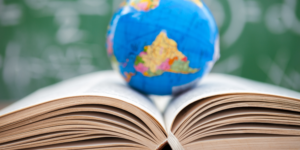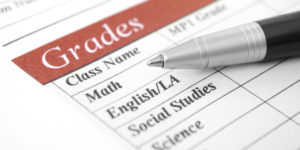5 Ways Australia’s Education System is Failing Its Students
In Australia, classrooms seem to be at a breaking point – Amid ongoing discussions about educational budget cuts and escalating costs, a critical issue remains largely overlooked: the gradual decline in educational standards.
Here are just five of the ways in which the education system is failing Australian children:
1) Australian Students Are Way Behind Other Countries
Australian students are trailing behind countries like Singapore and China – in 2022, Australia’s PISA score was 1497, while Singapore’s was 1,679.
This decline underscores socio-economic disparities, with a 43% underperformance in mathematics among students from the lowest socio-economic quartile.
According to the PISA 2022 report, the focus on less challenging conten contributing to this decline, is starkly different from the approach in high-performing East Asian countries.
2) Students Disengaging from Mathematics
The participation of Australian high school students in mathematics has seen a significant downturn. In 2020, only 66% of Year 12 students were enrolled in a mathematics subject, a sharp decline from previous years.
The drop in higher-level mathematics participation is especially worrying, considering the growing demand in STEM fields (Nearly 75% of the fastest growing occupations require science, technology, engineering and mathematics (STEM) skills and knowledge.)
Factors contributing to this trend include a lack of interest, perceived difficulty, absence of mathematics as a university prerequisite, and teacher shortages.
3) Monolingual Tendencies in Australian Education
The Australian education system exhibits a strong monolingual tendency, with only about 8% of students learning multiple foreign languages, significantly lower than the OECD average.
At a time when many industrialized nations are emphasizing multilingual education and cultural understanding, particularly in English, Australia’s education system is experiencing a decline in language diversity.
Globally, English proficiency has become a fundamental skill. Consequently, Australians who speak only English are finding themselves in an increasingly competitive job market, where many candidates are bilingual or multilingual, fluent in English and their native languages.

4) Challenges in Teacher Quality
Despite Australian teachers being among the best-paid globally, the education system faces a critical teacher shortage.
For example, the NSW Department of Education released figures that show there are 10,000 classes per day not being adequately staffed due to teacher shortages.
This shortage is exacerbated by limited career advancement opportunities and the pressures of the COVID-19 pandemic. The quality of education, especially in rural and remote areas, is severely affected, with many teachers feeling undervalued and disrespected.
Monash University has unveiled significant insights into the challenging environment within which teachers operate, shedding light on key concerns:
Lack of Respect: A staggering 7 in 10 teachers admit to not feeling respected by the Australian public. This pervasive sentiment can undoubtedly influence their performance and job satisfaction.
Safety Concerns: One in four teachers does not feel safe in their workplace, underscoring a serious issue that demands attention and resolution.
Unmanageable Workload: Less than 14% of teachers report that their workload is manageable. This alarming statistic points to a systemic issue affecting the well-being and effectiveness of educators.
Dwindling Satisfaction: The satisfaction levels among teachers have plummeted from 65.9% to 45.8% since 2019. Such a decline is concerning, especially considering the pivotal role teachers play in shaping the future through education.
Desire for Influence: Teachers express a collective desire for a voice in policy-making, emphasizing the need for their perspectives to be considered in shaping the educational landscape.

5) Declining Literacy Skills
Experts point out that the Australian education curriculum’s breadth often hinders deep learning, leading to inadequate literacy skills among students. What this has led to is a superficial coverage of literacy skills with students not being able to fully grasp the concepts.
This is evident in the alarming statistics: 40% of Australian students aren’t reading proficiently, and 20% of Year 9 students struggle with reading.
That’s not all.
NAPLAN (National Assessment Program – Literacy and Numeracy) test results showed that 28.9 percent of the state’s students were falling behind tough new benchmarks introduced this year, particularly in grammar and punctuation, where at least 30 per cent in each assessed year level failed to meet expected standards.
The results were similar across Australia, where an average of 33 per cent were below expectations, including almost one in 10 students not achieving the expected learning outcomes for literacy and numeracy at their year level.
Need help navigating the NSW Selective Test 2024 and NSW Selective Test 2025? Reach out here: https://scholarlytraining.com/whatsapp










